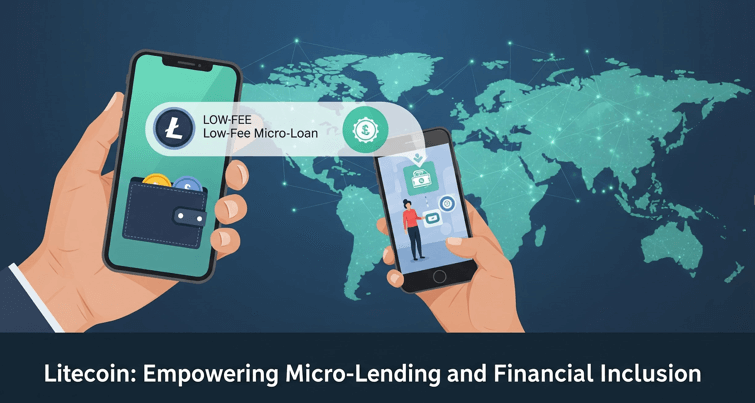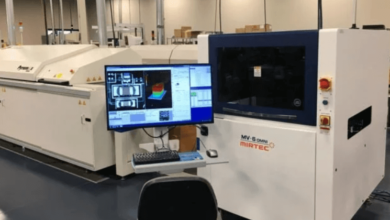Litecoin Driving Micro Lending and Financial Access

Litecoin’s low transaction costs, typically under $0.05, and fast 2.5-minute confirmations make it ideal for peer-to-peer micro-lending in underserved regions, offering a practical bridge to financial inclusion while shaping Litecoin price expectations
Low Fees Enable Micro-Lending Models
Litecoin’s average transaction fee remains under $0.05, even during demand spikes, due to its Scrypt algorithm and block capacity of 56 TPS. For micro-lending on a few dollars or cents, such minimal fees make small loans feasible, unlike Bitcoin, where fees often exceed the loan size.
Lower fees also mean better borrower-lender economics, more funds reach communities, and platforms can automate processing without exorbitant costs. Lending platforms targeting developing nations cite transaction efficiency as a core benefit.
Peer-to-Peer Microfinance Structure
Blockchain-powered micro-lending platforms now use smart contracts (or multisig escrow) to enable trustless lending. Borrowers in rural Africa, Southeast Asia, or Latin America can access capital directly via mobile wallets. Data from blockchain lending case studies highlights:
- Security: Blockchain reduces fraud risk and enforces repayments automatically.
- Access: No need for bank accounts or branch visits. Ethereum or comparable solutions lower access barriers.
Litecoin’s ultra-low fees and wallet simplicity position it as an optimal infrastructure choice, allowing repayment and lending flows at scale.
Financial Inclusion Benefits
Expanding Credit Access
In regions where less than 40% of adults have a bank account, Litecoin-based micro-lending platforms enable trustless credit delivery without formal KYC or infrastructure. Early pilot programs in East Africa (inspired by platforms like Kiva and Zidisha) are testing LTC peer-to-peer models.
Reducing Costs and Boosting Earnings
Fees eaten by intermediaries are often 10–20% on tiny loans. LTC’s low-fee mechanism ensures borrowers and lenders retain more value, growing trust in community lending.
Promoting Digital Financial Literacy
Using minimal LTC transactions encourages local users to adopt wallets and peer-to-peer finance, laying the groundwork for deeper digital inclusion.
Technical and Ecosystem Considerations
- Pocketable Transaction Cost
The typical $0.05 LTC fee is affordable for micro-payments, crucial for loans of $5–50. - Wallet Accessibility
Litecoin wallets are simple, open-source, and support mobile applications accessible to low-income users. - Scalability and Speed
With a 2.5-minute block time and 56 TPS, Litecoin handles high volumes smoothly and reliably. - Decentralized Participation
Its Scrypt algorithm fosters network decentralization, ensuring trust in regions often lacking robust governance.
Challenges and Mitigations
- Volatility Risk
Litecoin’s price can fluctuate by 10–20% monthly. Borrowers might face currency risk. Structured hedging or swift repayment mechanisms are needed. - Internet Dependency
Micro-lending requires reliable mobile internet, which is patchy in some rural areas. Offline signing or SMS-based wallet solutions may help bridge this gap. - Regulatory Uncertainty
Cross-border crypto lending raises compliance and AML/KYC challenges. Programs must align with local regulations to scale effectively. - Education Requirements
Users need training on wallet usage, repayment tracking, and private key management, fundamental to avoiding losses.
Impact on Litecoin Price and Uptake
- Enhanced Transaction Volume
As more microloans flow via LTC, on-chain usage rises, boosting data-driven fundamentals and potentially improving Litecoin price. - Narrative Shift
Moving away from speculation, Litecoin becomes a tool for real-world financial inclusion, strengthening investor narratives around utility and resilience. - Network Effects
Growth in micro-lending applications could spur wallet development, local partnerships, and further LTC adoption, benefiting overall ecosystem growth.
Recommendations for Stakeholders
- Builders: Develop lightweight wallets with offline capabilities and integrate LTC micro-lending contracts.
- NGOs and Developers: Pilot LTC-backed microfinance efforts using A/B trials, measure outcomes such as repayment rates and user satisfaction.
- Investors: Monitor on-chain lending metrics and growth in micro-lending platforms for early signals of adoption.
- Regulators: Support financial inclusion by clarifying compliance requirements for small-scale peer-to-peer crypto lending.
Conclusion
Litecoin’s combination of low fees, fast settlement, and decentralized wallet support positions it as a powerful enabler of micro-lending in developing nations. By helping lenders and borrowers connect directly, LTC platforms can promote economic inclusion and uplift communities that traditional financial systems often overlook.
For the litecoin price, these real-world use cases drive utility, network activity, and credibility. As micro-lending initiatives scale, they are bolstered by technology and supportive regulations. Litecoin stands to benefit both socially and economically.





